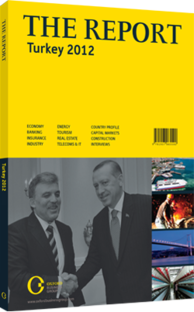Jim O’Neill, Chairman, Goldman Sachs Asset Management, on Turkey and the Next 11

Many years ago, Goldman Sachs studied the growth prospects of a number of economies which we felt had the potential to become as big as the so-called BRICs (Brazil, Russia, India and China) in the future. We examined all those nations that had populations just below their BRIC counterparts – the next-largest countries, in terms of number of people – because the key features determining economic size are the number of people that work and their level of productivity. None of the countries on the “Next 11,” (N11), which includes Turkey, is likely to be as big as the four BRIC countries in the future, but their growth potential is nevertheless enormous. Indeed, four of the N11 are already sufficiently large that, like the BRIC nations, we think it is inappropriate to refer to them as traditional “emerging” economies, because their size gives them distinct advantages.
In addition to BRIC, the list of countries we are calling “growth economies” includes Turkey, Korea, Indonesia and Mexico, each of which accounts for more than 1% of global GDP.
In terms of measuring the economic potential of a country, it is important to look at the factors that drive its productivity. Goldman Sachs monitors these factors using an index we call the growth environment score (GES), which measures 18 different variables that are pertinent to a nation’s productivity and sustainable growth. The scores tabulated in the index can range from zero to 10, with 10 being the highest. We simply aggregate the 18 variables into six different categories which we then weight equally. Turkey scores 4.9, which means it ranks fifth out of the N11, behind Korea, Vietnam, Mexico and Iran. However, it fared better than six of the others, including Indonesia. Korea is easily the top ranked, with a very high 7.7. Indeed, Korea’s score is above all the G7 countries on such a ranking.
Turkey, meanwhile, achieved scores similar to those of Russia, and ranked quite a bit higher than India. Within its overall scores, Turkey scored relatively well on some areas of macroeconomic performance, such as inflationary controls and external debt. However, the country also performed poorly in terms of investment spending and the low level of international trade, given the size of its overall GDP. For Turkey to reach its vast economic potential, it needs to certainly boost both of these.
I often think of Korea as being some sort of a role model for the rest of the N11 and BRIC countries. It is the only country I can think of, during my career, that has transformed itself from a low-income nation into one that enjoys a level of prosperity comparable to some developed nations, such as Spain. The policies which enabled Korea to achieve these impressive results can be a template for other economies hoping to follow in its footsteps.
Some observers may be surprised to read that Turkey scores quite well in terms of the rule of law and corruption levels. Although Korea is regarded as a level for which the other N11 should be aiming, Turkey compares quite well in the group.
Many of the 18 variables relate to the uptake of modern technology, as well as other key attributes that are required to be an attractive business destination. Turkey ranks lower than it should, in this regard, but efforts to spread the benefits of modern technology across more of the population, boost the number of patents and improve research and development, are all smart policy goals for Turkey.
If Turkey can successfully implement these policies, then over the next two decades and beyond the country could achieve spectacular growth.
In light of the country’s unique geographic location, which puts it in a position of bringing East and West together, and given the upheaval currently taking place in the Middle East and North Africa region, I feel that Turkey embodies a goal for other emerging economies; it provides a good example of how Western-style capitalism can function, even in different cultural and religious circumstances.
You have reached the limit of premium articles you can view for free.
Choose from the options below to purchase print or digital editions of our Reports. You can also purchase a website subscription giving you unlimited access to all of our Reports online for 12 months.
If you have already purchased this Report or have a website subscription, please login to continue.

